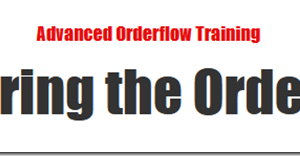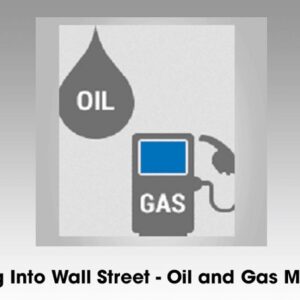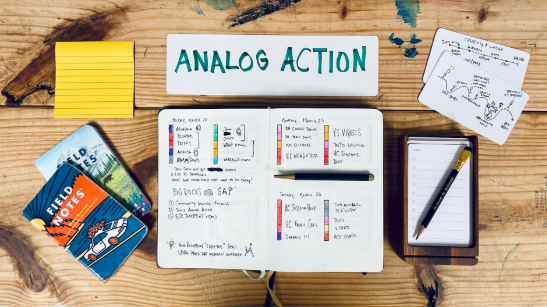Matt Ragland – Analog Action
$249.00 Original price was: $249.00.$23.00Current price is: $23.00.
- Delivery: You Will Receive A Receipt With Download Link Through Email.
- If you need more proof ofcourse, feel free to chat with me!

Sales Page: https://mattragland.podia.com/analog-action
Delivery Time: Instant DownloadDescription
Table of Contents
ToggleProof of payment:


Matt Ragland’s Analog Action – Double Your Productivity? Matt Ragland is transforming how we approach productivity, offering a counter-intuitive yet compelling solution: blending the power of analog tools with our increasingly digital lives. Let’s delve into the core of his methodology, Analog Action, and explore how it promises to help us reclaim our focus, reduce digital overwhelm, and ultimately, double our productivity.
Matt Ragland
Matt Ragland, the creator of Analog Action, has recognized a prevalent issue in our modern world: the paradox of productivity tools. While designed to enhance efficiency, these tools often contribute to digital overload and a feeling of being constantly scattered. His approach offers a refreshing alternative, advocating for a balanced integration of traditional and digital methods to achieve peak performance.
The Problem of Digital Overload
We live in a world saturated with information. Our phones buzz with notifications, our inboxes overflow with emails, and our to-do lists stretch endlessly across multiple digital platforms. This constant barrage of stimuli, as highlighted in the Analog Action system, can lead to significant cognitive strain. The relentless pursuit of the “perfect” productivity app often becomes a distraction in itself, consuming valuable time and energy that could be better spent on actual work.
Ragland poignantly describes this struggle: “I was sitting in my home office, surrounded by three different devices, jumping between six productivity apps, and somehow still missing important deadlines. My carefully crafted digital systems had become a maze of notifications, reminders, and endless to-do lists.” This resonates with many who find themselves overwhelmed by the very tools meant to simplify their lives. The core issue isn’t the absence of tools; it’s the abundance and the way they fragment our attention. Each notification, each app switch, each digital ping pulls us away from the task at hand, hindering deep focus and ultimately reducing our overall output. The constant connectivity creates a sense of urgency and anxiety, making it difficult to prioritize and concentrate on what truly matters.
The Analog Action framework recognizes that the problem isn’t a lack of information, but rather, a surplus that overwhelms our cognitive capacity. We’re constantly bombarded with data, making it difficult to discern what’s important. By adopting a more mindful and intentional approach to technology, we can reclaim our focus and regain control over our attention. This involves consciously choosing to limit distractions, prioritize tasks, and engage with digital tools in a way that supports, rather than hinders, our productivity. It’s about moving from a reactive to a proactive mode, shaping our environment to facilitate focus and concentration.
The Cognitive Benefits of Going Analog
One of the key pillars of Analog Action is the emphasis on the cognitive benefits of using pen and paper. This isn’t just about aesthetics or a nostalgic yearning for simpler times. Ragland underscores the scientific evidence that supports the idea that writing by hand engages our brains differently than typing on a keyboard. Physically forming letters and words activates specific brain regions associated with learning and memory, leading to deeper processing and retention of information.
Research suggests that handwriting enhances encoding, forcing us to slow down and actively engage with the material. When we type, our fingers glide effortlessly across the keys, often without much conscious effort. Handwriting, on the other hand, requires more deliberate motor control, which strengthens the connection between our hands and our brains. This deeper engagement leads to better comprehension and recall. In essence, handwriting transforms us from passive receivers of information to active participants in the learning process.
Moreover, the tactile experience of writing can be more engaging and satisfying than typing. The feel of the pen on paper, the visual trace of the ink, and the physical act of creating something tangible can all contribute to a more immersive and memorable experience. This can be particularly beneficial for tasks that require creativity or critical thinking. Writing by hand allows us to explore ideas more freely, experiment with different formulations, and develop a deeper understanding of the subject matter. The physicality of the act fosters a connection to the ideas that’s harder to replicate digitally.
Analog Action encourages us to embrace the power of handwriting, not as a replacement for digital tools, but as a complementary practice that enhances our cognitive abilities and improves our overall productivity. By incorporating analog methods into our daily routines, we can unlock the potential of our brains and achieve a deeper level of focus and engagement.
Integration, Not Elimination.
The core philosophy of Analog Action isn’t about banishing digital tools to some technological wilderness. It’s about finding harmony, a way to leverage the strengths of both analog and digital methods. It is a system of integrating them together for maximum impact. Acknowledging strengths and weaknesses of each, this system seeks to create a system that is far more effective that simply using on or the other in isolation.
Ragland eloquently captures this sentiment when he says, “I realized I didn’t have to choose between paper and digital tools – I just needed to find the right way to use both together.” This realization forms the bedrock of the Analog Action system, which provides a structured framework for combining the focus-enhancing power of analog tools with the convenience and scalability of digital systems. The beauty of this approach lies in its adaptability; it’s not a one-size-fits-all solution, but rather a customizable framework that can be tailored to individual needs and preferences.
Think of it as building a house. Digital tools are like the power tools – efficient for certain tasks, like quickly cutting wood. But analog tools are like a level and a plumb bob; they ensure the foundation is solid and the structure is sound. Combining both allows you to build something robust and lasting. For example, using a paper notebook for brainstorming allows for free-flowing ideation without the distractions of notifications or the limitations of a screen. Then, transferring those ideas to a digital task manager ensures they’re organized, prioritized, and trackable. This integration leverages the strengths of both, creating a powerful synergy.
Analog Action isn’t simply about using both paper and digital; it’s about using them intentionally and strategically. It’s about understanding the unique benefits of each and deploying them in a way that maximizes their impact. By carefully curating our digital environment and consciously incorporating analog practices, we can create a productivity system that is both effective and sustainable. This is a powerful paradigm shift that allows us to get the benefits of both worlds without sacrificing quality or focus.
Analog Action
Analog Action goes beyond just advocating for the use of pen and paper. It provides a structured and actionable framework that individuals can implement to improve focus and productivity. The system promotes a holistic approach, addressing the challenges of digital overload and offering specific methods for integrating analog and digital tools effectively.
15-Minute Daily Commitment: The Sweet Spot
A cornerstone of Analog Action is the deceptively simple concept of a 15-minute daily commitment. Ragland emphasizes that this seemingly small time investment can yield significant results over time. This isn’t about adding another overwhelming task to your already-busy schedule; it’s about making small, strategic changes that compound into dramatic improvements in your productivity and focus.
The beauty of the 15-minute commitment lies in its accessibility and sustainability. It’s a manageable chunk of time that even the busiest individual can carve out of their day. This eliminates the common barrier of feeling overwhelmed by the prospect of adopting a new productivity system. By breaking down the process into small, actionable steps, Analog Action makes it easier to get started and maintain momentum. Moreover, the short duration encourages consistency. It’s easier to commit to something for 15 minutes a day than it is to dedicate hours to it. This consistency is key to building new habits and seeing lasting results.
Furthermore, the focused nature of the 15-minute commitment forces you to prioritize. You can’t do everything in 15 minutes, so you have to choose what’s most important. This instills a sense of clarity and purpose, ensuring that you’re focusing your energy on the tasks that will have the biggest impact. It’s about working smarter, not harder. The framework encourages you to use this short duration intentionally, maximizing the potential of this time allocation.
Analog Action understands that overwhelming schedules often lead to procrastination. The 15-minute commitment is a gentle nudge, that removes the mental block and helps you achieve a sustainable and manageable approach to productivity improvement. By starting small and building momentum, you can create a positive feedback loop that drives continuous progress and fosters a sense of accomplishment.
Core Frameworks and Systems: BEAM, POST, OMG, GAP & WRAP
Analog Action offers practical frameworks to guide the integration of analog and digital tools. These structured systems provide a clear roadmap for improving focus, organizing tasks, and achieving goals, further solidifying the effectiveness of Matt Ragland‘s approach.
- B.E.A.M (Brainstorm, Encode, Anchor, Minimize distractions): This framework emphasizes the effective use of pen and paper.
- Brainstorm: Use pen and paper to freely generate ideas without judgment. This encourages creative thinking and allows you to capture thoughts as they arise, without the constraints of a digital interface. This is the perfect method for capturing all the ideas that come to mind and creating a rich and detailed foundation for the work that will follow.
- Encode: Actively process and summarize information. This step involves carefully reviewing the brainstormed ideas, identifying key concepts, and condensing them into concise notes. Encode is where thoughts are being filtered and structured.
- Anchor: Connect notes and ideas to real-world actions or contexts. It’s about making the information relevant and actionable by linking it to specific projects, deadlines, or goals. Anchor involves planning for implementation and it sets the stage for turning ideas into tangible outcomes.
- Minimize distractions: Create a focused environment to maximize effectiveness. This crucial step is necessary to ensure that you can concentrate on the task at hand without being interrupted by external stimuli. The BEAM framework understands the negative impacts of distractions and offers techniques to create a quiet and productive space for focused work.
**Analog Action**'s BEAM is a system designed to leverage the cognitive benefits of handwriting, guiding you through a process that enhances creativity, comprehension, and focus.
- P.O.S.T (Produce, Organize, Sync, Track): This method focuses on using digital tools effectively in conjunction with paper systems.
- Produce: Generate content and create initial drafts digitally. Digital tools excel at content creation, offering speed, flexibility, and a wide range of editing options. This is where thoughts get put to words, design, or data, leveraging the efficiency that computers and software give.
- Organize: Structure and categorize digital files and information. Digital systems offer powerful organizational features, allowing you to create folders, tags, and labels to easily manage your digital assets.
- Sync: Ensure information is accessible across devices. Cloud-based storage and syncing services allow you to access your files from anywhere, ensuring that you can stay productive regardless of your location. Sync ensures that information is available whenever and wherever needed, improving productivity.
- Track: Monitor progress on projects and tasks. Digital task management tools provide features for setting deadlines, assigning responsibilities, and tracking progress, allowing you to stay on top of your work. It contributes to efficiency by maintaining a central view of the project status.
**Analog Action**’s POST provides the tools you need to implement ideas after brainstormed on paper. It creates a connected and efficient workflow using digital tools.
- O.M.G (Objectives, Milestones, Goals): This framework helps break down large aspirations into manageable steps.
- Objectives: Define broad, overarching objectives. These are the big-picture goals that you want to achieve in the long term. This provides a high-level direction of the work and offers a sense of purpose.
- Milestones: Identify key milestones that mark progress toward those objectives. Milestones serve as checkpoints along the way, providing a sense of accomplishment and allowing you to track your progress. Milestones ensure that efforts are aligned and on-track.
- Goals: Setting specific attainable goals for the milestones. Each goal should be measurable, achievable, relevant, and time-bound (SMART), to ensure that progress can be monitored and evaluated effectively. Setting the goals this way ensures that the path to success is clearly visible and easily achieved.
**Analog Action**’s OMG allows people to set clear goals and make progress toward their aspirations more attainable.
- GAP & WRAP (Weekly planning and review): This involves using Goals, Actions, Protection (GAP) for planning and Wins, Results, Alignment, Pivot (WRAP) for review.
- Goals (GAP): Identify the most important goals for the upcoming week, aligning them with your overall objectives. This ensures that your efforts are focused on the tasks that will have the biggest impact.
- Actions (GAP): Define the specific actions you’ll take to achieve those goals. This breaks down each goal into manageable steps, making it easier to get started and stay on track.
- Protection (GAP): Identify potential distractions or obstacles that could derail your progress and develop strategies to mitigate them. This proactive approach helps you stay focused and productive throughout the week.
- Wins (WRAP): Celebrate your accomplishments and acknowledge the progress you’ve made during the week. This provides a sense of accomplishment and motivates you to keep going.
- Results (WRAP): Evaluate the results of your actions and assess whether you achieved your goals for the week. This allows you to identify areas where you excelled and areas where you can improve.
- Alignment (WRAP): Assess whether your current activities are aligned with your overall objectives and values. This ensures that you’re focusing your energy on the things that truly matter.
- Pivot (WRAP): Identify any necessary adjustments to your strategy or approach based on your experiences during the week, keeping in mind your wins, struggles, and data on tracking to ensure future improvements and success.
Analog Action’s GAP & WRAP is system that ensures continuous improvement and helps you stay on track towards achieving your goals.
Who is Analog Action For?
The ideal customer for Analog Action, according to the provided text, isn’t someone necessarily tech-averse, but rather someone at a breaking point with their current digital-heavy workflow. They are characterized by a few key traits, setting them up for success with Ragland’s system. The person experiencing overwhelm is the main target, they’ve perhaps explored multiple productivity apps and systems only to find themselves more scattered and stressed, rather than more efficient.
Crucially, the ideal customer is open to trying something different, even something that might seem counter-intuitive in today’s digital-first world. There has to be a willingness to experiment with pen and paper. They don’t have to be calligraphy experts or avid journalers. They just need to be willing to embrace the idea of incorporating analog methods into their daily routines. Without this open mind, the Analog Action system will struggle to take root. Furthermore, this customer must willing to simplify their workflow too. They are ready to eliminate unnecessary tools, streamline their processes, and focus on what truly matters. They are moving from a complicated and disjointed system to a more focused and manageable routine.
These personal traits combined with a willingness to commit 15 minutes a day paints a portrait of the ideal Analog Action customer. They may have had a digital first mindset, but the desire to switch and take control of their life is strong. They are not just looking for a productivity hack; they are looking for a sustainable way to reclaim their focus, reduce stress, and achieve more meaningful progress on their goals.
Expected Outcomes: Focus, Progress, and Confidence
Analog Action isn’t just about getting more done, it is about transforming one’s relationship with work and technology. The promised outcomes extend beyond simple productivity metrics. Users can anticipate experiencing a deeper sense of focus and mental clarity, enabling them to concentrate more effectively on the task at hand and minimize distractions.
The framework also suggest more meaningful results. It is about prioritizing high-impact activities and eliminate time-wasting tasks. The sense of consistent progress on important goals provides clarity. By breaking down large objectives into smaller, more manageable steps, Analog Action fosters a sense of momentum and accomplishment. This consistent progress builds confidence, transforming the work ethic. As users experience the tangible benefits of the system, they gain greater confidence in their ability to manage their time, prioritize their tasks, and achieve their goals.
Analog Action ultimately promises to replace a sense of overwhelm with a feeling of control. The framework is more than just a set of techniques; it’s a pathway to a more focused, productive, and fulfilling work life. In addition to the framework, Matt Ragland recognizes the importance of a healthy relationship with technology. By promoting mindful engagement with digital tools and encouraging regular breaks from the screen, Analog Action helps users minimize digital overwhelm and reclaim their attention. A system that can be implemented, mastered and customized to meet their specific needs.
Conclusion
Analog Action, conceptualized by Matt Ragland, is a compelling solution to the digital overload that plagues modern productivity. By strategically integrating analog tools like pen and paper with the convenience of digital systems, it promises to unlock deeper focus, reduce stress, and ultimately, double productivity with just a 15-minute daily commitment. The system’s structured frameworks, including B.E.A.M., P.O.S.T., OMG, and GAP & WRAP, provide a clear roadmap for individuals seeking a more balanced and effective approach to work and life. The true power of Analog Action lies in its ability to empower individuals to reclaim their attention, simplify their workflows, and achieve meaningful progress on their goals, creating a more focused, productive, and fulfilling existence.
Related products
-

Propedge Trading – Mastering the Orderbook
$34.50 -
Sale!

Andy Howard – Automatic Payment Pools
$97.00Original price was: $97.00.$34.50Current price is: $34.50. -
Sale!

Learn Oil and Gas Modeling – Breaking Into Wall Street (BIWS)
$497.00Original price was: $497.00.$28.00Current price is: $28.00. -
Sale!

[Group Buy] Crypto Tax Evasion – Exrheturn
$28.00Original price was: $28.00.$17.00Current price is: $17.00.

Reviews
There are no reviews yet.